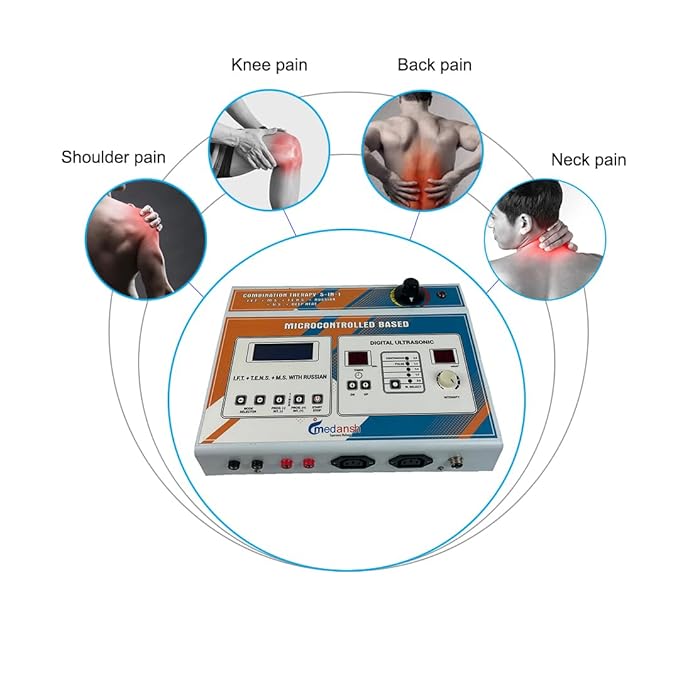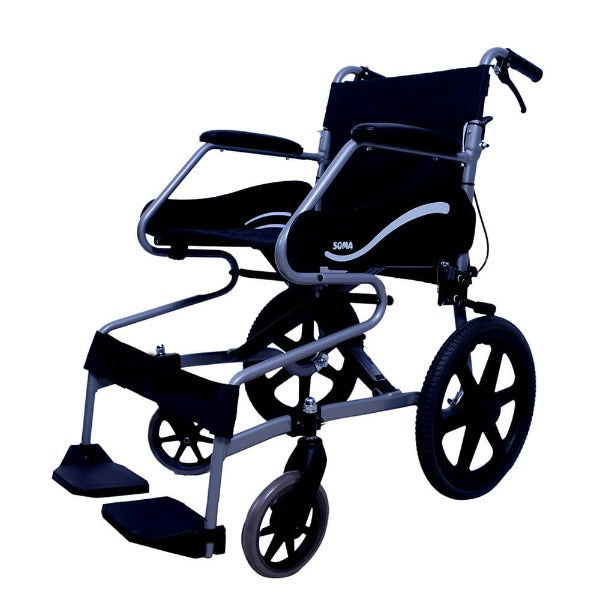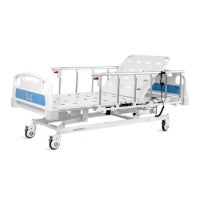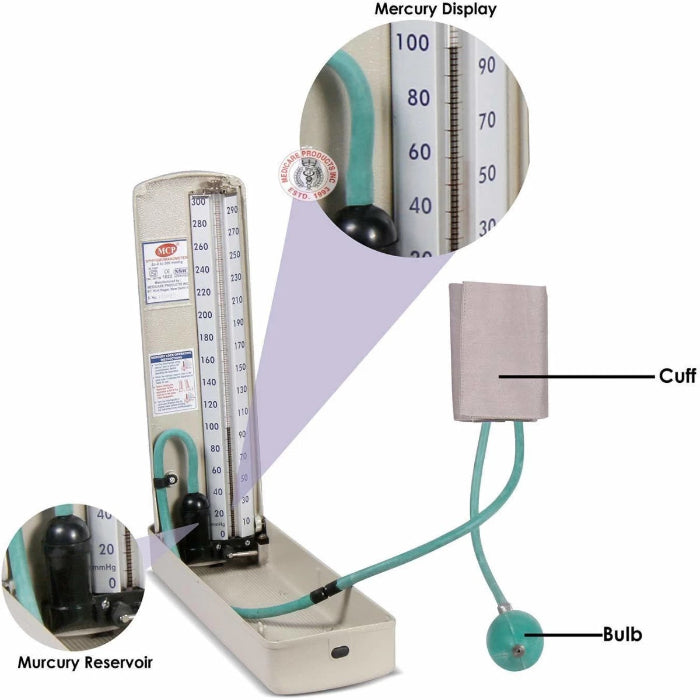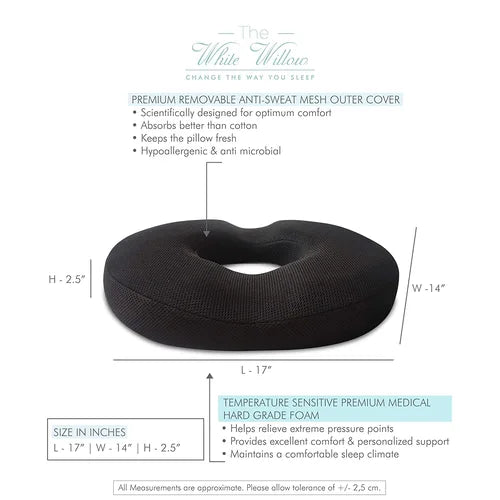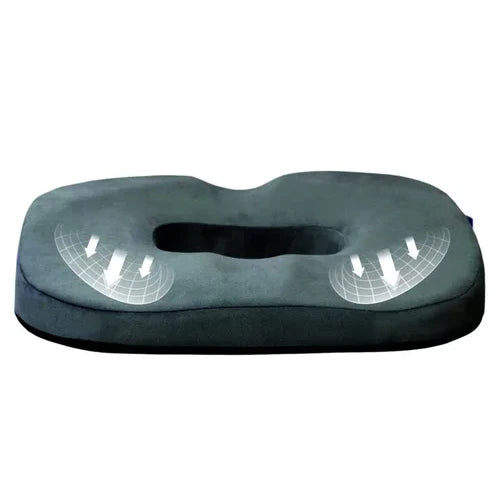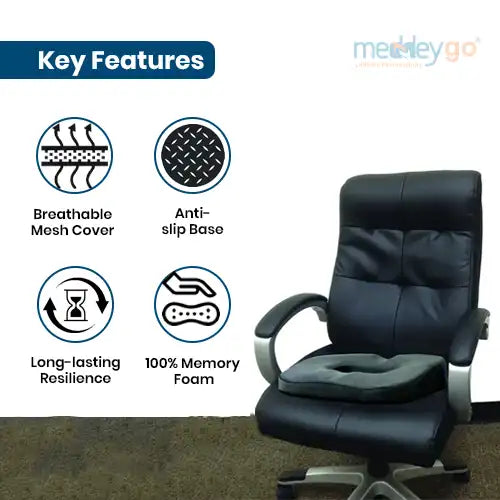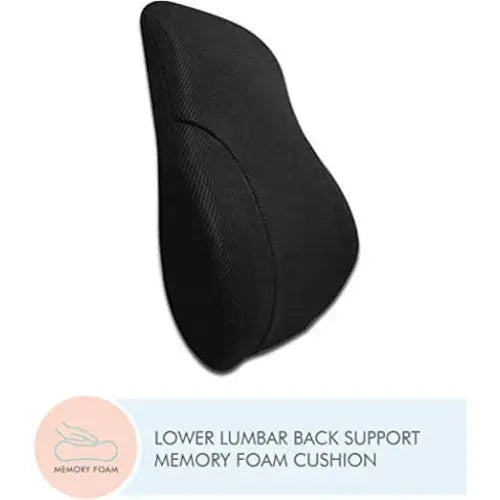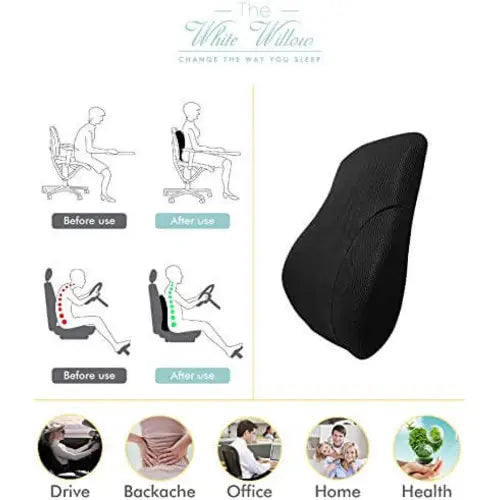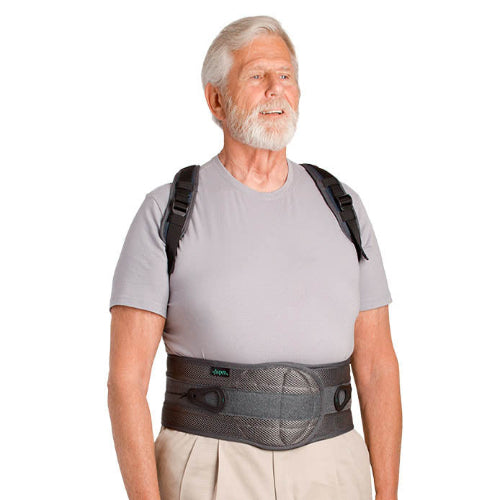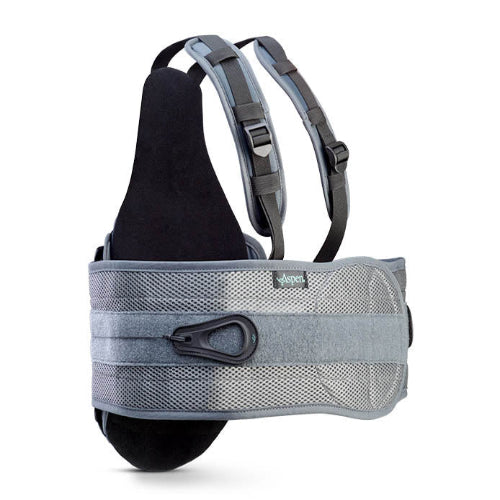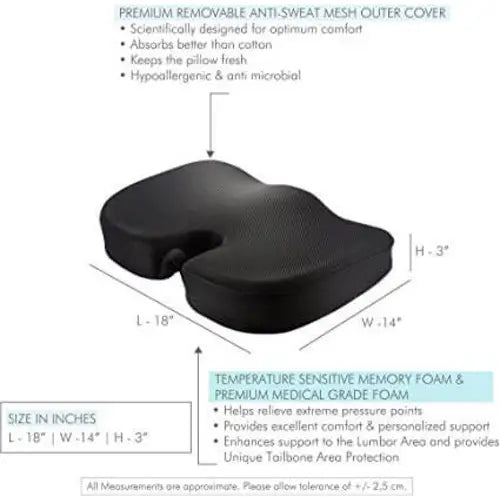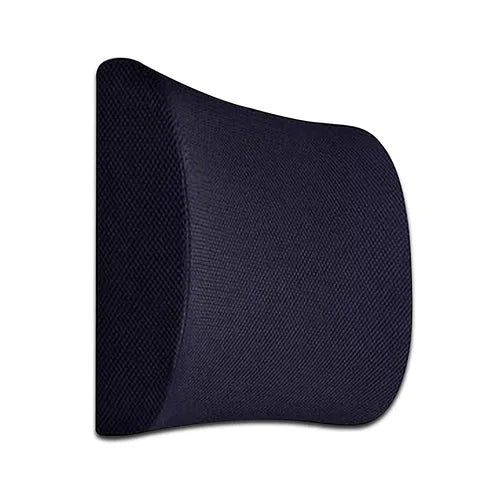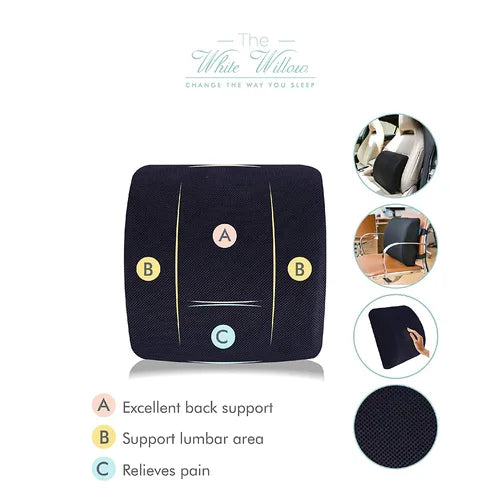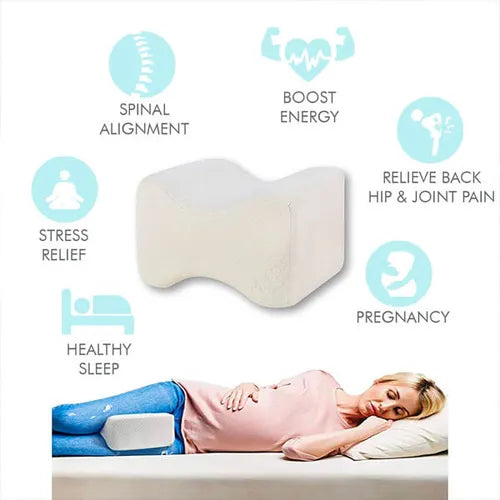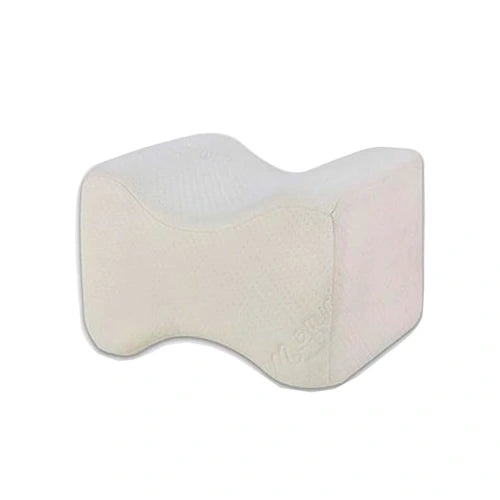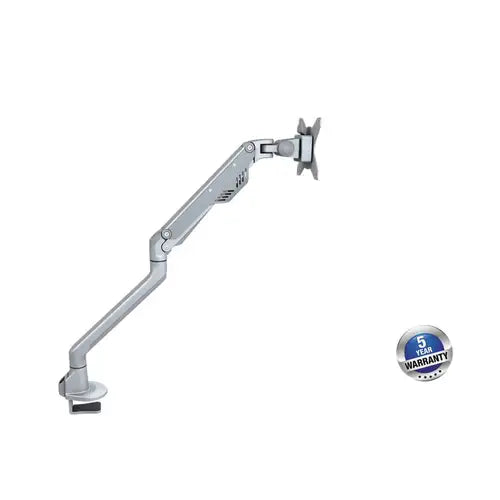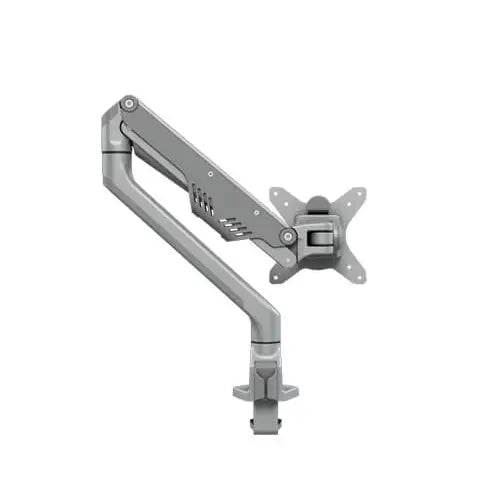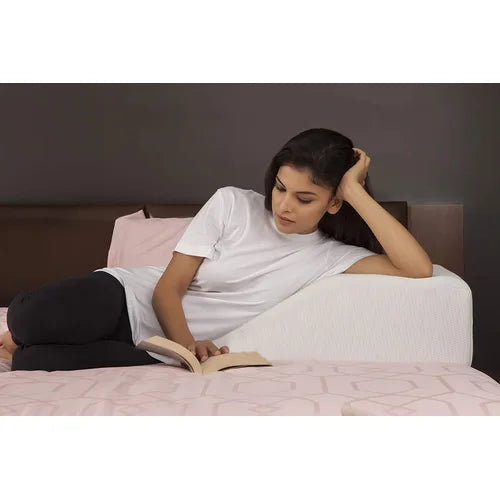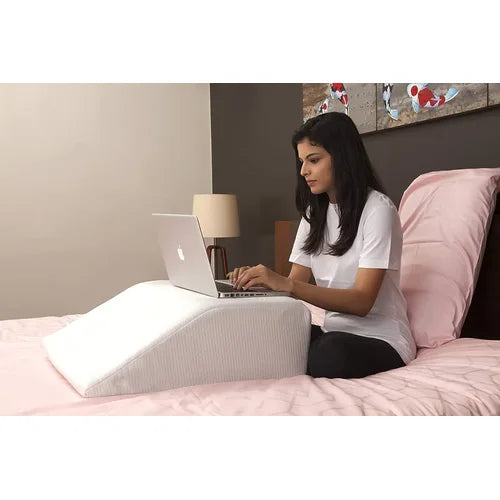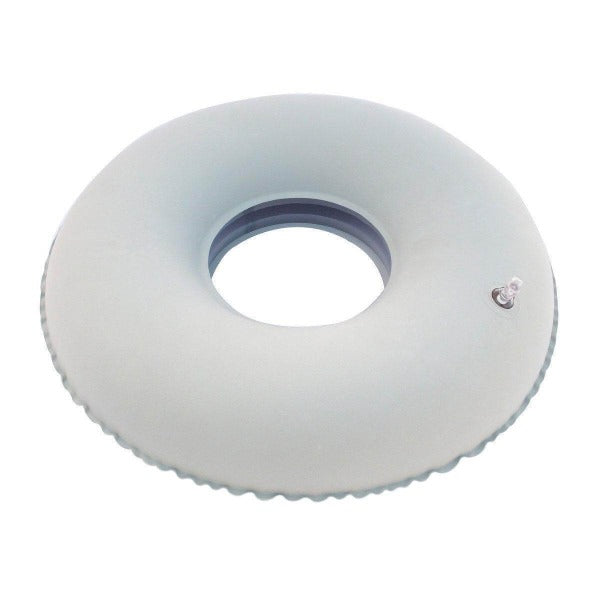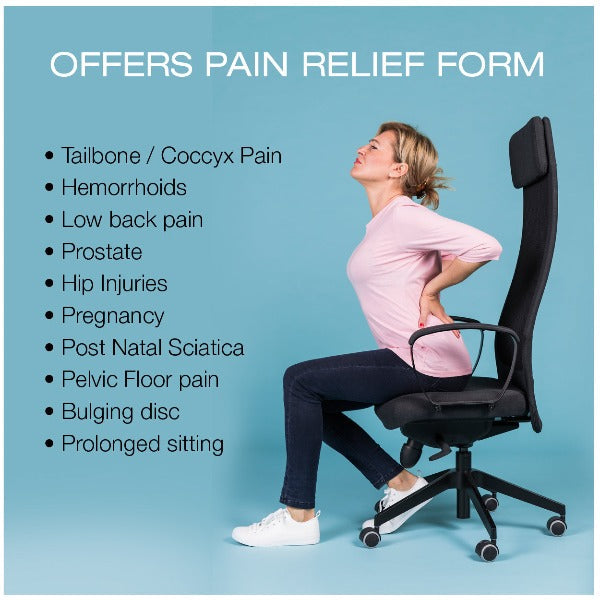Filter
11 products
Type: Posture Care
Donut Tailbone Pillow Hemorrhoid Cushion
Type: Posture Corrector
Donut Seat Hemorrhoids Tailbone Memory Foam Cushion
Type: Posture Corrector
Coccyx Gel Cushion for Coccydania Tail Bone Sciatica Back Pain Releif by Viaggi
Type: Posture Corrector
Lumbar Full Back Support Memory Foam Backrest Cushion - Back Support & Pain Relief
Type: Posture Products
Aspen OTS TLSO 457 Thoracolumbar Support
Type: Posture Care
Coccyx Seat Cushion Memory Foam for Tailbone Pain Relief
Type: Posture Corrector
Lumbar Support Memory Foam Backrest Cushion
Type: Posture Corrector
Knee Support Memory Foam Leg Rest Pillow - Sciatica Knee Leg Pain
Type: Posture Corrector
EasyMove Monitor Arm- (Gas Spring) Single Screen
Type: Posture Corrector
Bed Wedge Pillow Memory Foam for Leg Support for back hip and knee pain relief
Type: Medansh
Health and Yoga Seating Air Cushion
Collection:
Posture Corrector
A posture corrector helps your spine stay in a natural, healthy line so your back, neck and shoulders do not carry extra stress throughout the day. On MeddeyGo, the Posture Corrector collection brings together simple cushions, smart desk tools and structured braces that work like a complete posture kit. You will find a back posture corrector for computer work, a soft posture corrector belt for daily use under clothes and a supportive back support belt for phases when your back needs extra stability. If you prefer a flexible back posture belt for gentle guidance or a memory foam cushion for tailbone pain, this collection makes it easy to compare, select and order in a few clicks.
Product Overview
The MeddeyGo posture corrector range is built around real life in India. People sit in traffic, stand for long hours, bend over patients, manage counters, work on laptops at home and study late into the night. Over time, these habits often create rounded shoulders, a stiff neck and a tired lower back. A well-chosen back posture corrector or back support belt offers a gentle reminder and extra support so the body can return to a neutral, more comfortable position.
This collection includes:
- Posture corrector belts and back posture belt designs for the upper back and shoulders
- Lumbar cushions and full backrest cushions for office chairs, car seats and home seating
- Donut cushions and coccyx cushions for tailbone and sitting bone relief
- Thoracolumbar braces for structured spine support under medical guidance
- Knee and leg rest pillows and bed wedge pillows for better posture while lying down
- Seating air cushions to encourage active sitting
- Monitor arms and ergonomic add-ons to lift screens to eye level
Key Features and Benefits
-
Guided alignment of shoulders and upper back
- A posture corrector belt or back posture belt wraps around the shoulders and upper back. It gives a light pull that reminds you to avoid slouching. When you start to round your shoulders or drop your head forward, the belt’s gentle resistance makes you aware of the change. This training effect helps you build better posture habits over time without forcing the body into a very rigid position.
-
Focused lower back support
- Lumbar cushions and full backrest cushions fill the natural inward curve of the lower back. They help your pelvis sit in a neutral position instead of tilting too far forward or backward. A back support belt can add extra stability when you are standing for long periods, doing light lifting or moving around in a clinic or shop. These supports reduce strain on small joints and ligaments while allowing you to move and bend comfortably.
-
Tailbone and pelvic comfort during long sitting
- For people with tailbone pain, hemorrhoids or postnatal tenderness, sitting on a flat surface can be difficult. Donut cushions and coccyx cushions are shaped to reduce direct pressure on the tailbone and soft tissues. When you combine a coccyx cushion with a back posture corrector or lumbar cushion, you create a more complete sitting support system for long meetings, driving or study hours.
-
Help during recovery and special conditions
- Some users need more structured help than a soft belt or cushion. For them, the collection includes thoracolumbar braces that support the mid and lower spine. These devices limit unsafe movement and give healing tissues time to repair. In certain recovery phases, a doctor may also recommend a back support belt for short periods during walking or gentle activity.
-
Better desk and screen posture
- In many cases, poor posture comes from a low screen and a deep, soft chair. A lumbar cushion, paired with a monitor arm that lifts the screen to eye level, changes the way your back and neck sit during work. Adding a posture corrector belt for high-focus tasks, such as detailed reporting or long consult notes, creates a simple yet effective desk posture setup.
-
Easy to use and maintain
- Most products in this posture corrector range are lightweight and low-maintenance. Belts and braces use soft, breathable fabrics with simple buckles or Velcro. Cushions and pillows often have removable covers that can be washed. This makes it easier to keep them clean in hospitals, clinics, offices and homes and to use them every day.
Technical Specifications
| Product Type | Main Purpose | Key Materials | Support Area | Ideal User Profile |
|---|---|---|---|---|
| Posture Corrector Belt / Back Posture Corrector | Train shoulders and upper back to stay upright | Neoprene or elastic fabric, Velcro straps, plastic or metal adjusters | Upper back, shoulders, upper thoracic spine | Desk workers, students, mild rounded shoulders |
| Back Support Belt | Support lower back during standing, walking or light lifting | Elastic band, stays or panels, hook-and-loop closure | Lumbar spine and lower back | Retail staff, warehouse staff, OPD workers, home users |
| Lumbar / Full Backrest Cushion | Improve sitting posture on chairs and car seats | High-density or memory foam, breathable fabric cover | Lumbar curve and mid-back region | Office professionals, drivers, home office users |
| Donut / Coccyx Cushion | Relieve pressure on tailbone and sitting bones | Foam or gel core, soft fabric cover, sometimes anti-slip base | Coccyx, ischial tuberosities, perineal area | Hemorrhoids, coccydynia, postnatal and post-surgery users |
| Thoracolumbar Brace | Structured spine support under clinical guidance | Rigid or semi-rigid frame, padded straps, inner lining | Mid and lower spine (thoracic and lumbar) | Post-surgical and complex spine cases (doctor-supervised) |
| Knee / Leg Rest Pillow | Align hips, knees and lower back during sleep | Contoured memory foam, removable washable cover | Knees, hips, lower back | Side sleepers, people with sciatica, knee or hip pain |
| Bed Wedge Pillow | Elevate upper body or legs in bed | Wedge-shaped foam block, soft cover | Upper back, neck or legs (as positioned) | Reflux, breathing issues, post-operative rest, senior users |
| Seating Air Cushion | Encourage active sitting and improve core engagement | Durable PVC or similar air-filled material | Whole sitting surface | Desk workers, balance training, rehab and fitness users |
| Monitor Arm / Screen Riser | Raise screen to eye level and reduce neck strain | Metal arm with joints, clamps or base | Neck and upper back alignment (indirect support) | Office staff, clinicians, students, gamers, designers |
Applications and Use Cases
Home and work-from-home
Many people first feel posture-related strain at home, especially when they use dining chairs or sofas as workstations. A basic posture corrector belt plus a lumbar cushion can transform this experience. The belt supports the upper back, and the cushion supports the lower back, creating a more balanced sitting posture even on simple furniture. A donut or coccyx cushion is a helpful addition for users with tailbone pain during online meetings, study sessions or long calls.
Clinics, physiotherapy centres and hospitals
Physiotherapists, orthopedic doctors and rehab specialists often include posture aids in treatment plans. A thoracolumbar brace or medical back support belt may be recommended after spine surgery or injuries. Memory foam cushions and wedge pillows help staff position patients correctly in chairs, wheelchairs or beds. In OPD or waiting areas, a few well-placed lumbar cushions or coccyx cushions can improve comfort for patients who need to sit for extended periods.
Corporate offices and educational institutes
Corporate wellness programs frequently look for practical posture tools that can be rolled out across teams. Lumbar cushions, seating air cushions and a light back posture belt are popular because they are easy to distribute and use. In colleges and coaching centres, a simple back posture corrector can support students who spend long hours at desks preparing for exams, while also encouraging better long-term posture habits.
Travel, commuting and driving
Long drives and daily commuting can place constant stress on the lower back and neck. Compact lumbar cushions from the Posture Corrector collection fit car seats and provide support along the spine. Donut cushions help those with tailbone pain travel with less discomfort, even during stop-and-go traffic. For some users, a slim back support belt adds a sense of stability during trips that involve lifting luggage or navigating stairs.
Senior care and long-term home support
Older adults may have age-related spinal changes, reduced muscle strength and balance issues. A gentle posture corrector or back posture belt can help them stay upright during slow walks or daily tasks. At the same time, wedge pillows and knee pillows make lying more comfortable and reduce night-time tossing due to back or hip discomfort. These small supports can make reading, watching TV, praying or socialising more pleasant and less tiring.
Why Choose Posture Correctors from MeddeyGo?
Practical and relevant for Indian conditions
MeddeyGo focuses on posture corrector products that fit real Indian homes, clinics, offices and lifestyles. The aim is not to overload you with options but to offer a curated mix that clearly shows what each product is meant for. Whether you need a basic posture corrector belt for a young professional, a back support belt for clinic staff or a thoracolumbar brace for a recovering patient, you can find suitable choices in one place.
Complete solution in one category
This collection combines belts, cushions, pillows, braces and ergonomic tools under one roof. You do not have to search different websites for each item. You can build a complete posture kit: for example, a back posture corrector and lumbar cushion for your chair, a donut cushion for your car and a bed wedge pillow for evening relaxation. Clinical buyers can also plan complete packages for wards, therapy rooms and wellness programs.
Trusted brands and clear specifications
Products listed in the Posture Corrector collection come from brands with a track record in orthopedic, rehab or ergonomic support. Each product page highlights key materials, usage guidance, size information and basic care instructions in clear language. This makes it easier for doctors, physiotherapists, purchase managers and families to compare and decide which posture corrector or back support belt meets their requirements.
Options for individual and bulk buyers
MeddeyGo serves both individual users and organisations. A single buyer can order one back posture belt or cushion for home use. Clinics, hospitals, corporate offices and institutions can order multiple sizes and types of posture corrector belt, braces and cushions with GST-compliant invoices. Repeat ordering for additional units or replacement pieces is also straightforward.
Reliable logistics and support
MeddeyGo supports delivery to many pin codes across India. The customer service team can help with basic product selection questions, order tracking and invoice-related needs. This is especially useful for new buyers who are ordering a posture corrector or back support belt online for the first time and want extra reassurance.
Comparison Guide
| Main Problem | Recommended Product | Key Benefit | Suggested Usage Pattern |
|---|---|---|---|
| Rounded shoulders and slouching at desk | Posture Corrector Belt / Back Posture Corrector | Gently pulls shoulders back and trains upright posture | 30–90 minutes during focused work or study blocks |
| Lower back pain while sitting on chair or in car | Lumbar or Full Backrest Cushion | Supports lumbar curve and reduces spinal load | Most of the sitting time, with short walk breaks |
| Tailbone pain, hemorrhoids or postnatal tenderness | Donut Cushion / Coccyx Cushion | Offloads pressure from coccyx and soft tissues | During long sitting sessions, alternating with standing |
| Need for controlled spine support after surgery or injury | Thoracolumbar Brace + Medical Back Support Belt (as advised) | Stabilises mid and lower spine, limits unsafe movements | Strictly as prescribed by treating doctor or physiotherapist |
| Leg heaviness, hip or lower back strain while lying | Knee Support Pillow / Bed Wedge Pillow | Aligns hips and knees, supports lower back | At night or during recovery rest periods |
| Neck strain from looking down at low screens | Monitor Arm + Lumbar Cushion | Raises screen to eye level and supports back | All desk hours once screen is set to proper height |
| General fatigue from long static sitting | Seating Air Cushion + Light Back Posture Belt | Encourages active sitting and gentle posture awareness | Selected parts of the day to avoid overuse |
Buying Guide and Expert Tips
1. Define your main problem clearly
Decide if your priority is slouching shoulders, lower back pain, tailbone pain, post-surgery support or night-time discomfort.
- For slouching shoulders, start with a posture corrector belt or a back posture corrector.
- For lower back pain while sitting, begin with a lumbar cushion.
- For tailbone pain, choose a donut cushion or coccyx cushion.
- For clinical recovery, follow your doctor’s advice on braces and back support belt use.
2. Measure correctly for belts and braces
Always check chest or waist size as per the chart on the product page. A back posture belt or back support belt should feel snug but not tight or restrictive. A correct size improves comfort, support and overall effectiveness.
3. Match the product to your daily routine
Desk workers usually need a back posture corrector, a lumbar cushion and a proper screen height. Drivers may prefer a back support belt plus a compact cushion that fits the car seat. Many older adults do well with a gentle posture corrector and comfortable pillows for rest.
4. Start with short wearing time
When you first use any posture corrector, begin with 30 to 60 minutes once or twice a day. Let your body adapt slowly, then increase the duration only if it feels comfortable. This approach prevents stiffness and overdependence.
5. Combine with simple exercises
Posture tools work best when they are paired with light stretches and strength exercises for the neck, upper back, core and hips. Even basic daily movements make a back support belt or cushion more effective over the long term. Think of the posture corrector as support, not a replacement for muscle activity.
6. Choose washable and durable designs
For clinics, offices and shared spaces, pick products with removable, washable covers and strong stitching. This keeps your posture corrector accessories hygienic and helps them last longer. Durable designs also offer more consistent support.
7. Seek professional advice in special cases
After surgery, fractures or serious spinal problems, always consult a doctor or physiotherapist before using a new back support belt or brace. Follow the prescribed wearing schedule and adjustment instructions closely. Professional guidance keeps your recovery safe and effective.
Frequently Asked Questions
Do posture correctors really help?
A posture corrector supports the spine and shoulders so you notice when you start to slump. A back posture corrector holds the shoulders slightly back, and a cushion supports the lumbar curve. This makes it easier to maintain a healthier position without constantly thinking about it.
Is a posture corrector belt safe to use every day?
Yes, a posture corrector belt is generally safe when used for sensible durations and at a comfortable tightness. It should not cause sharp pain, tingling or strong pressure. If it does, loosen it or reduce wear time and, if needed, consult a clinician.
What is the difference between a back support belt and a back posture belt?
A back support belt mainly supports the lower back, especially during standing work or mild lifting. A back posture belt or upper back posture corrector focuses more on the upper back and shoulders. Some products combine both functions, yet your choice should follow where you feel the most strain.
Can a posture corrector remove back pain completely?
A posture corrector helps reduce strain from poor posture, which is one common cause of back pain. However, back pain can also come from other issues. Using a back posture corrector, cushion or back support belt along with exercise, medical care and lifestyle changes usually gives the best results.
How long should I wear a back posture belt at one time?
Most users start with 30 to 90 minutes at a stretch when using a back posture belt. This can be during focused work, long meetings or standing tasks. It is better to take breaks rather than wearing it firmly from morning to night.
Can I exercise while wearing a posture corrector belt?
Slow walking or light activity may be fine with a posture corrector belt if you feel comfortable. For heavier exercise, it is usually better to work on natural posture control and use the belt only if a physiotherapist recommends it.
Which posture corrector is best for office work?
For office work, many people benefit from a combination: a lumbar cushion, a simple back posture corrector and a monitor set at eye level. Those with more discomfort might also add a donut cushion or soft back support belt for part of the day.
Who should not choose a support belt on their own?
People with recent fractures, major spine surgery or serious spinal disease should not self-prescribe a back support belt or rigid brace. They should follow a doctor’s or physiotherapist’s guidance about which posture corrector or brace to use and how long to wear it.
How should I clean and care for my posture corrector?
Most belts and braces can be hand washed with mild detergent and air dried away from direct heat. Many cushions have removable covers that can be washed in a gentle cycle. Following the care label helps your back posture corrector and cushions last longer and maintain their support.
Who is the manufacturer of this product?
Meddey Technologies Pvt Ltd, C-75, First Floor, DDA Sheds, Industrial Area, Phase 1, Okhla, New Delhi – 110020.
Phone No: +91 8586-012345
Country of Origin: India.


